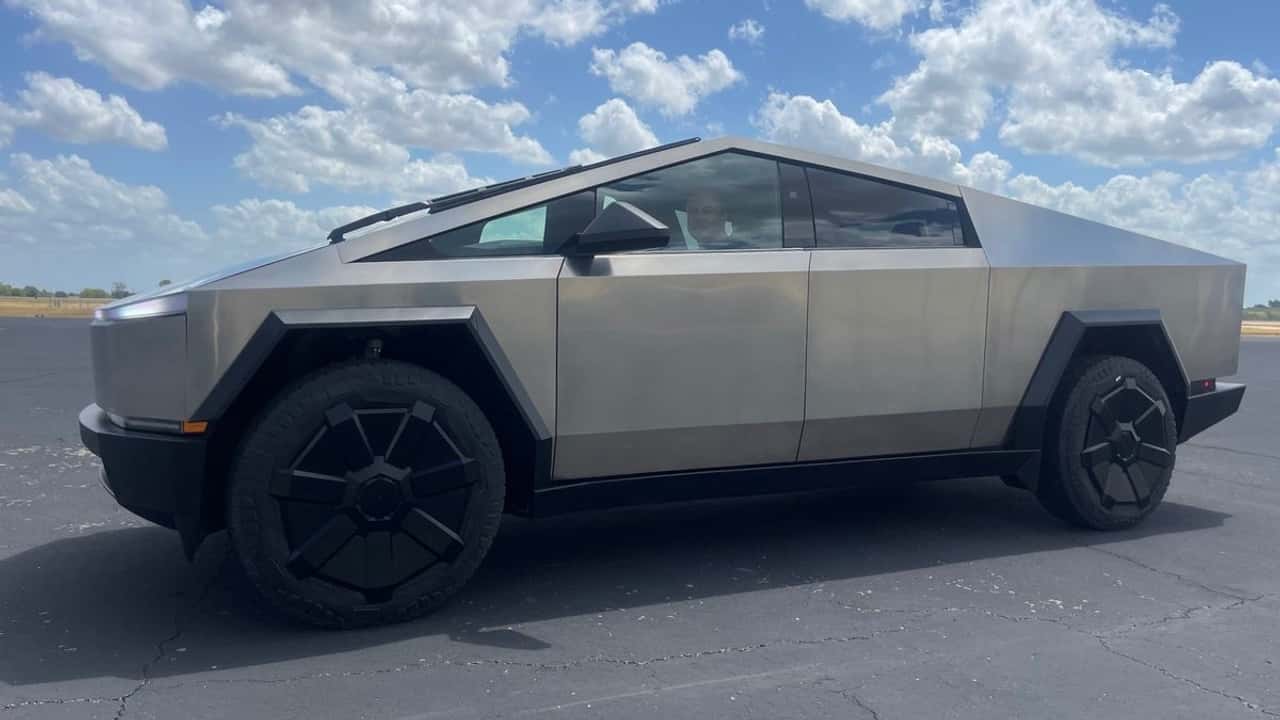Tesla is finally preparing to deliver its highly anticipated Cybertruck to customers, almost four years after its initial unveiling in November 2019. This marks a significant moment not only for Tesla but also for the electric pickup truck market as a whole. It will be interesting to observe how the Cybertruck’s entry into the market will influence and shape the segment.
Interestingly, Rivian’s CEO, RJ Scaringe, does not view the Cybertruck as a direct competitor to Rivian’s R1T or R1S. Speaking at the Code Conference 2023 on September 27, Scaringe dismissed the notion of competition between the two vehicles. He stated that there is likely little overlap in their customer base but acknowledged the value of having a unique product like the Cybertruck in the market. Scaringe emphasized that healthy competition is essential for the electrification of the entire automotive industry and expressed appreciation for the Cybertruck’s distinctive design.
Rivian is currently experiencing a favorable period, having tripled its production and delivery numbers in the second quarter of the year. The EV startup manufactured a total of 13,992 electric vehicles (including the R1T, R1S, and Amazon EDV models) at its facility in Normal, Illinois, and delivered 12,640 units during this period. With Rivian reaffirming its production guidance of 50,000 vehicles for the current year, all eyes are now on the third-quarter delivery numbers. In the first half of the year, Rivian built 23,387 vehicles and delivered 20,586.
The question arises as to whether Scaringe’s statement about the Cybertruck not being a direct competitor to the R1T holds true. With the R1T starting at $73,000 and potentially exceeding $100,000 for the Quad-Motor version with the Large battery pack and additional options, it is likely that many buyers will compare the R1T with the Cybertruck, assuming the latter is priced similarly.
Overall, the impending arrival of the Cybertruck in the market and Rivian’s continued success highlight the growing competition and innovation in the electric pickup truck segment. As more players enter the market, consumers can expect a wider range of choices and features, ultimately driving the electrification of the transportation sector towards a more sustainable future.
CEO of Rivian Claims Minimal Similarities Exist Between Tesla’s Cybertruck and R1T
In the wake of Tesla’s recent unveiling of its much-anticipated Cybertruck, debates have arisen regarding the similarities between the Cybertruck and Rivian’s R1T, an electric pickup truck set to hit the market in late 2020. Rivian’s CEO, RJ Scaringe, has come forward to address these comparisons, asserting that there are, in fact, minimal similarities between the two vehicles.
Scaringe emphasizes that Rivian’s approach to designing the R1T was driven by customer-centricity and a commitment to addressing the needs of outdoor adventurers, while also taking into account considerations such as optimal range, off-road capability, and luxurious comfort. He argues that these design choices make Rivian’s offering stand apart from Tesla’s Cybertruck, which he believes caters to a different set of consumer preferences.
The most glaring distinction can be observed in the exterior design. The Cybertruck features a truly unique and polarizing stainless-steel exoskeleton with sharp angles and straight edges, giving it a futuristic and unconventional appearance. On the other hand, the R1T offers a more conventional truck design, retaining the traditional pickup truck silhouette while incorporating modern and sleek elements. Rivian seeks to provide a balance between practicality and innovation in its electric pickup, making it visually more palatable to a wider range of customers.
Another significant aspect where the two vehicles diverge is in their target market. Rivian positions the R1T as a premium electric adventure vehicle, catering to outdoor enthusiasts who enjoy off-roading and experiencing rugged terrains without compromising comfort or style. The R1T boasts superior off-road capabilities, including a range of up to 400 miles on a single charge and the ability to ford through water up to three feet deep. In contrast, Tesla’s Cybertruck appeals more to those seeking a radical and avant-garde design, pushing the boundaries of conventional automotive aesthetics.
Furthermore, Scaringe emphasizes that Rivian’s vision culminates in a comprehensive ecosystem that encompasses not only the R1T but also an SUV, the R1S, and a network of charging stations, known as the Rivian Adventure Network. This network aims to address the range anxiety often associated with electric vehicles by providing charging infrastructure in remote and off-road areas, further solidifying Rivian’s commitment to adventure seekers.
While both the Cybertruck and the R1T are undoubtedly technologically advanced electric pickup trucks, Scaringe argues that Rivian’s emphasis on functionality, luxury, and adventure distinguishes it from Tesla’s offering. By addressing the specific needs and desires of outdoor enthusiasts, Rivian sets itself apart in the increasingly competitive electric vehicle market.
As the market for all-electric vehicles continues to grow, it is essential to recognize the unique offerings and differentiators that each manufacturer brings to the table. With its focus on adventure, durability, and luxury, the Rivian R1T is poised to make a significant impact in the automotive world, providing an alternative for customers who seek a more refined and versatile electric pickup truck.
In conclusion, RJ Scaringe, CEO of Rivian, asserts that minimal similarities exist between Tesla’s Cybertruck and Rivian’s R1T. From design differences to target market and overall brand vision, he makes a compelling case for their distinctions. As both companies compete for supremacy in the electric vehicle sector, it is refreshing to witness the diverse approaches each takes, ultimately leading to increased innovation and choice for consumers.

